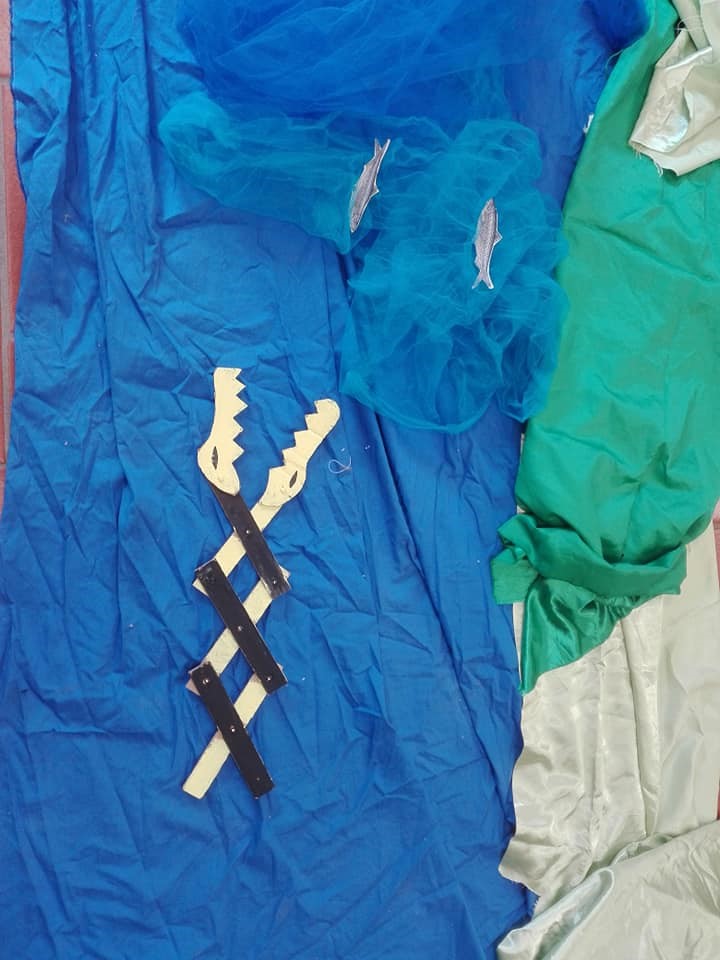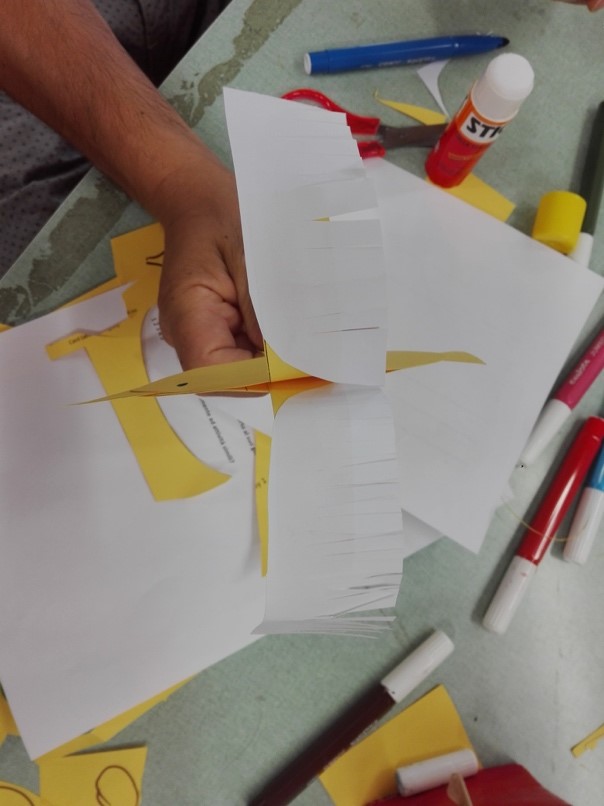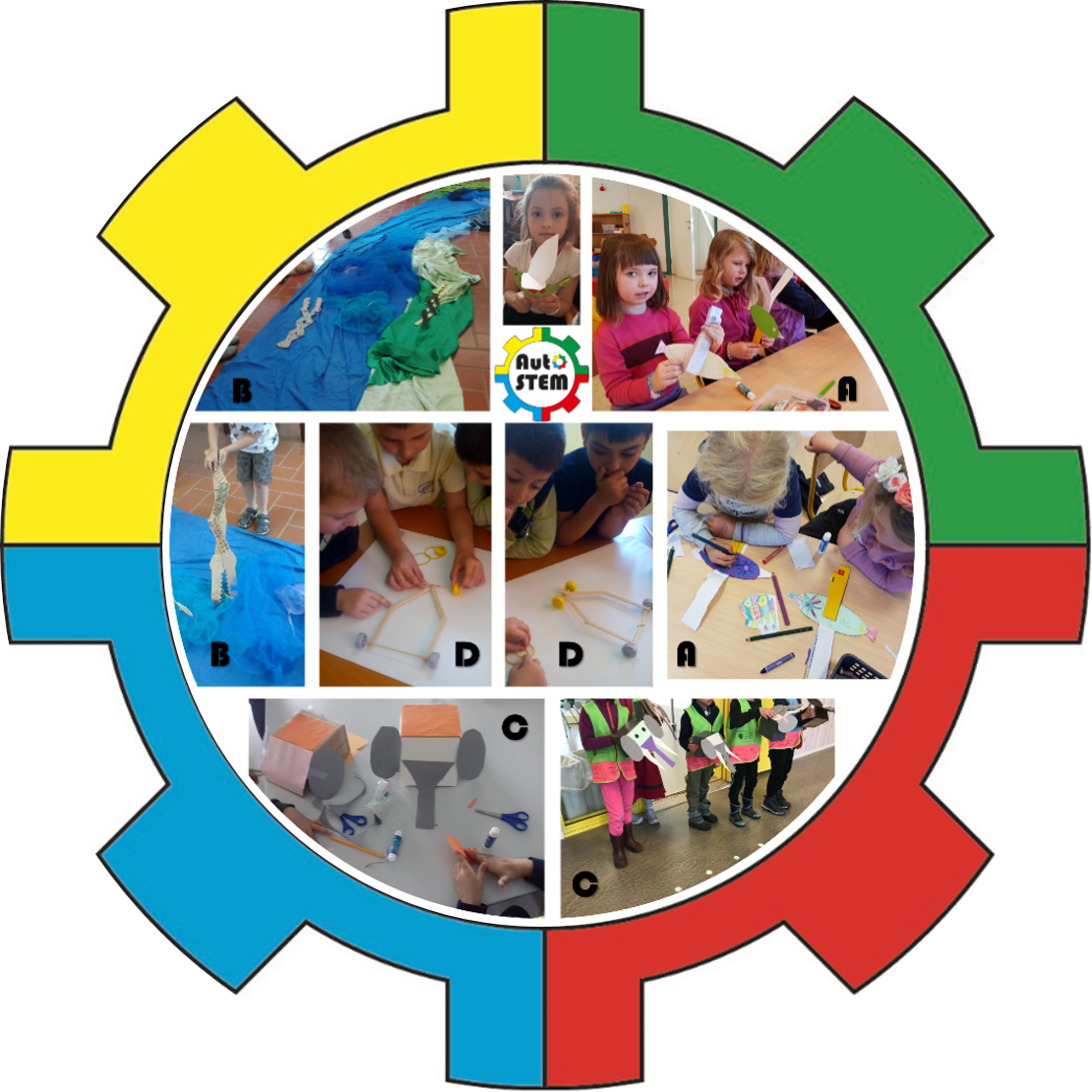Partner: Eureka
Country: Italy
Date 11th July 2019 h 17,30-19,30
A workshop that actively involved both 5 children 4-6 years old and their parents in the construction of paper automata for STEM concepts promotion, using an environmental scenario (“the river Nile”) as a framework to work and play with created automata and, overall, with the their biological characteristics.
Context This workshop was held in the Community Education Centre in Corciano (Perugia). This centre was born within a regional initiative aimed at fighting educational poverty among very young children, through the organization of educational activities which result from a process of participatory design, trying to obtain the involvement of many actors within the whole educating community (schools, families, parents associations, cultural associatios, municipalities, health departments).
Target groups – Children 4-7 and their parents. The workshop saw the participation of 5 children: one 4 years old, three of 5 and one of 6. Their parents were directly involved to support the children in the activity.
Objectives. The workshop lasted 2 hours, in which we experimented a format in which bio and mathconcepts were explored through the construction of the 2 mechanisms associated to the Crocodile and the Jellybird.
Description We decided to framework the automata construction activity and the exploration of the life and the characteristics of the represented animals against a specific natural environment, the river Nile. We thus created the scenario of the river (with fishes, stones etc) on the floor, using tissues and paper.

Exploring BIO around the River Nile animals
To introduce the workshop activity to the children, as well as to explore bio concepts, we used storytelling and dynamic questioning.
First of all we told them about two different species of animals that live around the river: the Nile Crocodile and the Kingfish bird, which are represented by our crocodile and our Jellybirds mechanism toys.
To present these animals, we showed them two already made prototypes, inviting them to give them own names and own identity.
Then, we explored the characteristics of the two species in a dynamic way.
For instance, we asked question such as: What do they they eat? Do you think they eat fish?
We suggested them some conclusive answers, like Both eat fish, then.
We guided the children to acknowledge that both the animals make eggs and told them that they both put their eggs along the river, on the ground. We then guided the children to reflect on common features and also differences between the two species.
Some questions in this phase were: So what they do have in common? What else does the croco eat, which the kingfish bird doesn’t? etc.
This phase lasted about 15 minutes. We then proceeded to engage the children in the automata
construction workshop, telling them that
it was necessary to build new friends
for the two animals (the River Nile Crocodile and the Kingfish) living in the
river Nile.
We started with the construction of the crocodile;
children and parents worked well together in spite of some difficult steps such
as finding the centre of the narrow rectangulars composing the crocodile body
by drawing the two opposing diagonals.

After having built the crocodrile and after a short break, it was time to build the Kingfish!
All the parents engaged in buiding the jellybird mechanism representing the Kingfish, but only two out of the five children were engaged in doing it.
The others chose to do other activities. Two little boys were playing with their crocodile making it “fishing in the river”, two little girls were decorating or drawing.
However, the birds were rapidly built and some parents also introduced personalized innovations to the given prototype, as in the picture below.

After the birds were ready, we invited all the children to give a name to their own Kingfish bird and to their own Nile Crocodile, inviting them again in reflecting and talking about their characteristics.
We then engaged the children in playing a final game: finding the eggs of the croco and of the kingfish, hidden along the river!
Tools and facilities. As shown in the “Instructions” part of this Guidelines, the materials for the mechanisms are: cardboard pieces already cut for the crocodile components, cardboard templates to be cut for the jellybird, scissors, glue stick; for the river Nile, you just need tissues, crispy paper and various elements such stones, fishes etc that can be realized with paper or puppets etc.
Access strategy. Dissemination was organized through WhatsApp, email, Facebook and enrollment was compulsory to participate.
Feedback. At the end of the workshop the parents were given a very short, evaluation form. Their feedback was very positive and they were very satisfied and proactive. We asked whether the workshop had stimulated their wish to play with the children by means of similar activities, we asked if in general they liked the workshop and if they would do a similar one. The rating was 1- 5 (min-max).
The 2 fathers gave 5 to all questions. One out of two mothers gave score 5, the other two scored 4.
We elicited the feedback of the children by asking them whether they had fun and would do this again. Of course the answer was “yes” but the enthusiasm in their voices was the evidence for us.
Conclusions and further developments
The workshop went surely very well. The format of creating the river environment revealed to be very successful for:
- Helped us to ground the exploration of the characteristics of the animals against a concrete scenario, physical and conceptual.
- Was very fun for the children, to have a real scenario to play with, mixing their creativity and invention with reality-based notions (ie. The crocodile eats fishes, fishing paper- fishes in the river through the crocodile mechanism)
We observed
that making two automata toys in the same workhop is too complex with children
of this age for they cannot concentrate in two activities. Moreover, the parents
are often too worried about the “performance” of their kids and the fact that a
kid refuses to be engaged in the second activity might cause discomfort.

